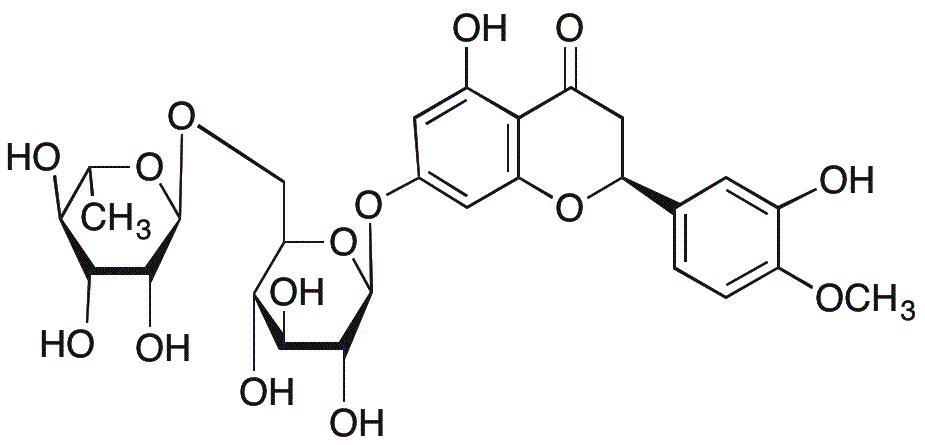Hesperidin is widely utilized in research focused on:
- Dietary Supplements: Commonly found in citrus fruits, hesperidin is used in dietary supplements for its potential health benefits, including antioxidant properties and support for cardiovascular health.
- Pharmaceuticals: It is incorporated in various pharmaceutical formulations aimed at treating conditions like chronic venous insufficiency, leveraging its anti-inflammatory effects to improve blood circulation.
- Cosmetics: Hesperidin is used in skincare products for its ability to enhance skin health, providing anti-aging benefits and improving skin elasticity.
- Food Industry: As a natural flavoring agent, it is added to food products for its citrus flavor, while also contributing to the nutritional profile due to its bioactive properties.
- Research Applications: Hesperidin is studied for its potential therapeutic effects in various diseases, including diabetes and cancer, making it a valuable compound in pharmacological research.
General Information
Properties
Safety and Regulations
Applications
Hesperidin is widely utilized in research focused on:
- Dietary Supplements: Commonly found in citrus fruits, hesperidin is used in dietary supplements for its potential health benefits, including antioxidant properties and support for cardiovascular health.
- Pharmaceuticals: It is incorporated in various pharmaceutical formulations aimed at treating conditions like chronic venous insufficiency, leveraging its anti-inflammatory effects to improve blood circulation.
- Cosmetics: Hesperidin is used in skincare products for its ability to enhance skin health, providing anti-aging benefits and improving skin elasticity.
- Food Industry: As a natural flavoring agent, it is added to food products for its citrus flavor, while also contributing to the nutritional profile due to its bioactive properties.
- Research Applications: Hesperidin is studied for its potential therapeutic effects in various diseases, including diabetes and cancer, making it a valuable compound in pharmacological research.
Documents
Safety Data Sheets (SDS)
The SDS provides comprehensive safety information on handling, storage, and disposal of the product.
Product Specification (PS)
The PS provides a comprehensive breakdown of the product’s properties, including chemical composition, physical state, purity, and storage requirements. It also details acceptable quality ranges and the product's intended applications.
Certificates of Analysis (COA)
Search for Certificates of Analysis (COA) by entering the products Lot Number. Lot and Batch Numbers can be found on a product’s label following the words ‘Lot’ or ‘Batch’.
*Catalog Number
*Lot Number
Certificates Of Origin (COO)
This COO confirms the country where the product was manufactured, and also details the materials and components used in it and whether it is derived from natural, synthetic, or other specific sources. This certificate may be required for customs, trade, and regulatory compliance.
*Catalog Number
*Lot Number
Safety Data Sheets (SDS)
The SDS provides comprehensive safety information on handling, storage, and disposal of the product.
DownloadProduct Specification (PS)
The PS provides a comprehensive breakdown of the product’s properties, including chemical composition, physical state, purity, and storage requirements. It also details acceptable quality ranges and the product's intended applications.
DownloadCertificates of Analysis (COA)
Search for Certificates of Analysis (COA) by entering the products Lot Number. Lot and Batch Numbers can be found on a product’s label following the words ‘Lot’ or ‘Batch’.
*Catalog Number
*Lot Number
Certificates Of Origin (COO)
This COO confirms the country where the product was manufactured, and also details the materials and components used in it and whether it is derived from natural, synthetic, or other specific sources. This certificate may be required for customs, trade, and regulatory compliance.


